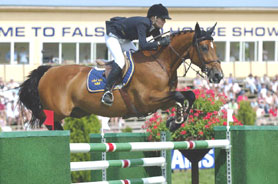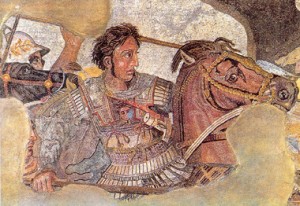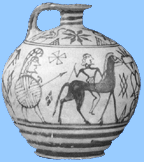It’s hard not to notice the disdain with which some sports watchers treat Dressage. They give silly quotes to media people that produce articles like: “Olympic dressage events leave Hong Kong’s horse racing fans yawning.”
Well of course they are yawning. You don’t get your Olympic thrills through eventing dressage, which is only more interesting than attractively-drying cement if it’s being done wrong. Olympic thrills are found on the next day, the Cross-County. Someone should have told the spectators, or at least the media. There is so much confusion in the world.
It is actually understandable that equestrian sports are such an oddity to the public, in spite of humanity’s millennia-old partnership with the animal. An uninitiated person would naturally assume modern equestrian sports have all existed since ancient times–in fact some of the most popular and exciting are hardly a century old.
It is an amazing bit of historical timing that an ancient skill like horsemanship was perfected to point it could conceive of athletic sports like 3-Day and Jumping … at the same time as the invention of automobiles. And today we have more horses than ever before.
Dressage, however, is truly as ancient as people assume all horseback riding is. It is a proven method of schooling horses that is at least 2500 years old. The origins were the battlefield, where discipline and athleticism were vital to cavalry success. Dressage is a gymnastics program for developing the horse’s physical abilities, and equally importantly, develops positive state of communication between the horse and rider. The system is utterly humane, to the degree of emphasizing only natural movements and requiring the horse be calm and relaxed at all times. Dressage is, in words of modern culture, the Jedi force that animates horsemanship. It is art, and there is magic in it.
Like all the arts, Dressage was lost with the decay of Western civilization during the Dark Ages. European Horsemanship disintegrated into barbarity as humanity lapsed into bestial conditions. The re-discovery of the ancient Classical art of Dressage was part of the earliest flowering of the Renaissance which sparked our current age.
There are multiple levels of dressage and as the levels go higher, the horse begins to develop more expressively until his gait becomes dancing. Some say dressage is like ballet, and as an educated art it is, though since dressage pre-dates ballet by over a millennium perhaps it is more accurate to say ballet is like dressage. (Dressage is also older than Classical music, that upstart.) The highest standard is the Grand Prix, exemplified in the competitive display of the Olympic Games. High level Dressage is a cultural event, as it was in the original Olympics themselves.
So that judge’s stand only looks like a bookie’s window, racing fans. I think the media gives too little credit to Hong Kong’s citizens. When Dressage is put to music at the final Freestyle, even racing fans may see the sparks which ignited during the Renaissance.
 Though horsemanship is ancient, Show Jumping itself is one of the world’s youngest professional sports!
Though horsemanship is ancient, Show Jumping itself is one of the world’s youngest professional sports!


